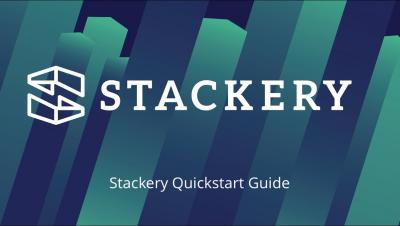Operations | Monitoring | ITSM | DevOps | Cloud
Stackery
Dealing With the AWS Lambda Invocation Payload Limits
If you’ve dealt with lambda functions you may have run across the RequestEntityTooLargeException - * byte payload is too large for the Event invocation type (limit 131072 bytes) AWS Lambda exception that occurs when a function is invoked with too large of a payload. Current AWS Lambda limits are set at 6 MB for synchronous/RequestResponse invocations, and 128 K for asynchronous/Event invocations.
An Announcement from Stackery
Yesterday our founder and CEO Nate Taggart announced his decision to step down from his post. While his presence will be missed by all of us, he made this choice in order for Stackery to bring in a new CEO with the experience and pedigree to steer the business to the next level.
6 Docs Every Serverless Developer Should Read
When I browse Stackery’s documentation and blog, I see some great writing that I know not everyone has read. Check out these great articles essential to growth as a developer.
Securing a Web Application with AWS Application Load Balancer
I was recently called upon to secure an Nginx web server with HTTPS, and my goal was to set this up with a certificate obtained from AWS Certificate Manager. It took me a while to figure out how to get everything configured and working. Hopefully someone else who is attempting to do the same thing will read this and I can save you some time!
Serverless Data Processing with AWS Step Functions, Part II.
Back in Part I of Deploying a Serverless Data Processing Workflow with AWS Step Functions, Nuatu mentioned one key benefit of using step functions is their visibility into business critical workflows. Outside stakeholders, support staff, and other engineers can look at a state machine execution in AWS or Stackery, and can easily understand the process.
Running Lambdas on your Laptop
Serverless has the potential to bring massive ops advantages to projects of all sizes, but while it presents great business benefits, we need to spare a thought for how teams develop on serverless. I recently published ‘Serverless Development is Broken’ a list of concerns about how developers can work with long deploy times inherent in a cloud-only code environment.
Write to S3 and call other Lambdas with Python
Many people writing about AWS Lambda view Node as the code-default. I’ve been guilty of this in my own articles, but it’s important to remember that Python is a ‘first-class citizen’ within AWS and is a great option for writing readable Lambda code. Take a look at these two starter examples of writing functionality in Python.
Deploying a serverless data processing workflow with AWS Step Functions
This is the first of a two-part blog series. In this post we’ll use Stackery to configure and deploy a serverless data processing architecture that utilizes AWS Step Functions to coordinate multiple steps within a workflow. In the next post we’ll expand this architecture with additional workflow logic to highlight techniques for increasing resiliency and reliability.





